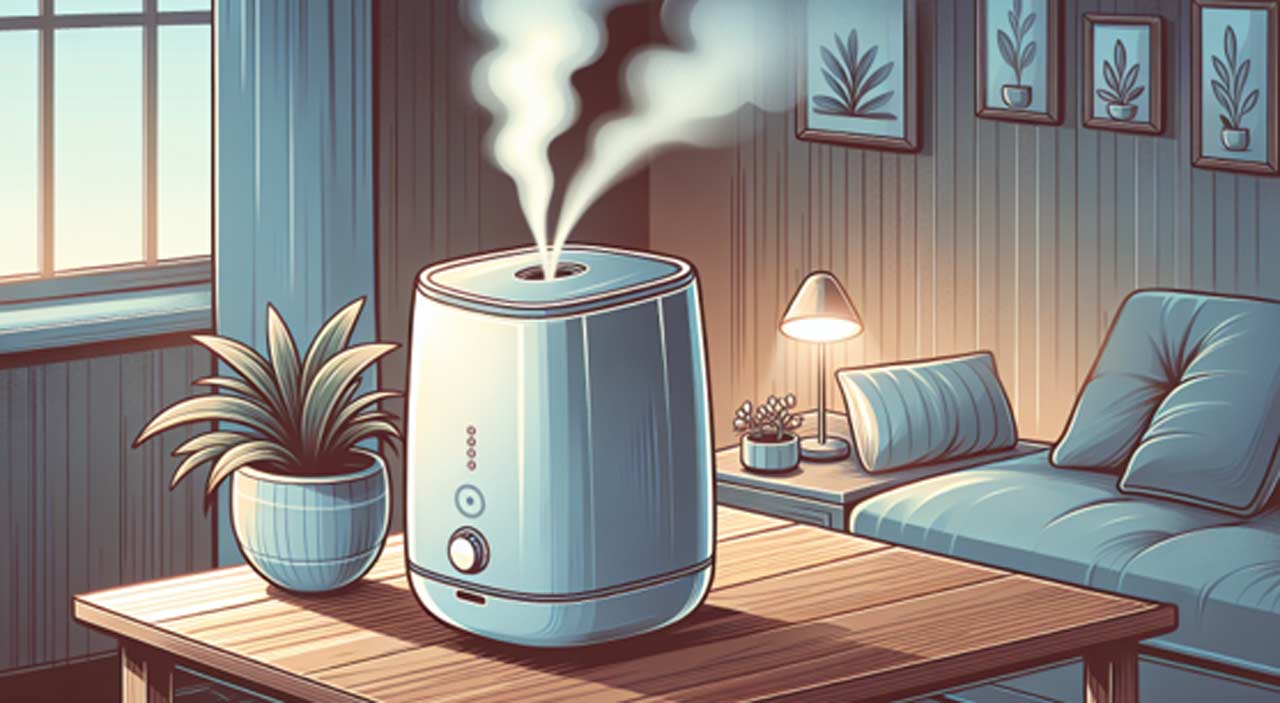 Introduction
Introduction
Allergies can be a real nuisance, causing discomfort and affecting daily life. One of the most effective ways to alleviate allergy symptoms is by maintaining optimal humidity levels in your home. This is where a humidificateur d’air comes into play. In this comprehensive guide, we will explore how a humidificateur d’air can help with allergies and what to consider when choosing the right one for your needs.
Understanding Allergies
Allergies are an overreaction of the immune system to typically harmless substances, such as pollen, dust mites, or pet dander. When exposed to these allergens, the body releases histamine, causing symptoms like sneezing, runny nose, itchy eyes, and congestion.
How Humidity Affects Allergies
Humidity plays a crucial role in the prevalence and severity of allergy symptoms. Both low and high humidity levels can exacerbate allergies.
Low Humidity and Allergies
When the air is too dry (low humidity), it can cause:
- Dry nasal passages, leading to irritation and inflammation
- Increased production of mucus, causing congestion
- Drying out of allergens, making them more easily airborne
High Humidity and Allergies
On the other hand, excessive moisture (high humidity) can:
- Promote the growth of mold and dust mites, common allergens
- Aggravate respiratory symptoms, such as coughing and wheezing
- Create a conducive environment for allergens to thrive
The Benefits of a Humidificateur d’air for Allergies
A humidificateur d’air helps maintain optimal humidity levels in your home, typically between 30% and 50%. By doing so, it offers several benefits for allergy sufferers:
- Reduces allergen concentration: Proper humidity levels prevent allergens from becoming airborne, minimizing their concentration in the air you breathe.
- Soothes respiratory passages: Moist air helps keep nasal passages and throats hydrated, reducing irritation and inflammation caused by allergies.
- Alleviates congestion: Optimal humidity levels thin out mucus, making it easier to expel and relieving congestion.
- Improves sleep quality: By reducing allergy symptoms, a humidificateur d’air can help you breathe more comfortably and sleep better at night.
Types of Humidificateur d’air
There are two main types of humidificateur d’air: cool mist and warm mist.
Cool Mist Humidificateur d’air
Cool mist humidificateur d’air release a fine, cool mist into the air. They are ideal for use in warmer climates or during summer months. There are two subcategories of cool mist humidificateur d’air:
Evaporative Humidificateur d’air
- Uses a wick filter to absorb water and a fan to blow air through the filter
- Affordable and low-maintenance
- Can be noisy due to the fan
Ultrasonic Humidificateur d’air
- Uses high-frequency vibrations to create a fine mist
- Quiet operation and energy-efficient
- Requires regular cleaning to prevent mineral buildup
Warm Mist Humidificateur d’air
Warm mist humidificateur d’air release a warm, soothing mist into the air. They are beneficial for use in colder climates or during winter months.
- Boils water to create steam, which is then cooled before being released
- Can help kill bacteria and germs due to the boiling process
- Potential burn hazard if knocked over
Factors to Consider When Choosing a Humidificateur d’air
When selecting a humidificateur d’air for allergies, consider the following factors:
Room Size
Choose a humidificateur d’air with an appropriate output capacity for the size of your room. A larger room will require a more powerful humidificateur d’air to maintain optimal humidity levels.
Humidistat
Look for a humidificateur d’air with a built-in humidistat, which allows you to set and maintain a specific humidity level. This feature prevents over-humidification, which can aggravate allergies.
Ease of Maintenance
Regular cleaning and maintenance are crucial to prevent the growth of mold and bacteria in your humidificateur d’air. Opt for a model that is easy to clean and has replaceable filters if necessary.
Noise Level
If you plan to use the humidificateur d’air in a bedroom or quiet space, consider a model with low noise output, such as an ultrasonic humidificateur d’air.
Best Practices for Using a Humidificateur d’air
To maximize the benefits of a humidificateur d’air for allergies, follow these best practices:
- Maintain optimal humidity levels: Keep humidity between 30% and 50% to prevent the growth of allergens and minimize respiratory irritation.
- Clean regularly: Follow the manufacturer’s instructions for cleaning your humidificateur d’air to prevent the growth of mold and bacteria.
- Use distilled water: Fill your humidificateur d’air with distilled or demineralized water to reduce mineral buildup and prevent the release of potentially harmful minerals into the air.
- Replace filters as needed: If your humidificateur d’air uses filters, replace them according to the manufacturer’s recommendations to ensure optimal performance.
- Monitor humidity levels: Use a hygrometer to monitor humidity levels in your home and adjust your humidificateur d’air settings accordingly.
Complementary Strategies for Managing Allergies
While a humidificateur d’air can provide significant relief for allergy symptoms, it is most effective when used in combination with other allergy management strategies:
Regular Cleaning
Vacuum carpets and upholstery regularly using a HEPA filter to remove allergens. Dust surfaces with a damp cloth to prevent allergens from becoming airborne.
Air Purification
Use an air purifier with a HEPA filter to capture airborne allergens and improve indoor air quality.
Allergy-Proof Bedding
Encase mattresses, pillows, and duvets in allergen-proof covers to minimize exposure to dust mites.
Medications and Immunotherapy
Consult with an allergist to determine if medications, such as antihistamines or nasal corticosteroids, or immunotherapy (allergy shots) can help manage your allergy symptoms.
Conclusion
A humidificateur d’air can be a powerful tool in managing allergy symptoms by maintaining optimal humidity levels in your home. By reducing allergen concentration, soothing respiratory passages, and improving sleep quality, a humidificateur d’air can significantly improve the quality of life for allergy sufferers.
When choosing a humidificateur d’air, consider factors such as room size, humidistat, ease of maintenance, and noise level. Adhering to best practices and combining the use of a humidificateur d’air with other allergy management strategies can provide comprehensive relief from allergy symptoms.
If you or a loved one suffers from allergies, investing in a humidificateur d’air can be a game-changer. Take control of your indoor air quality and breathe easier with the right humidificateur d’air for your needs.
 Introduction
Introduction






